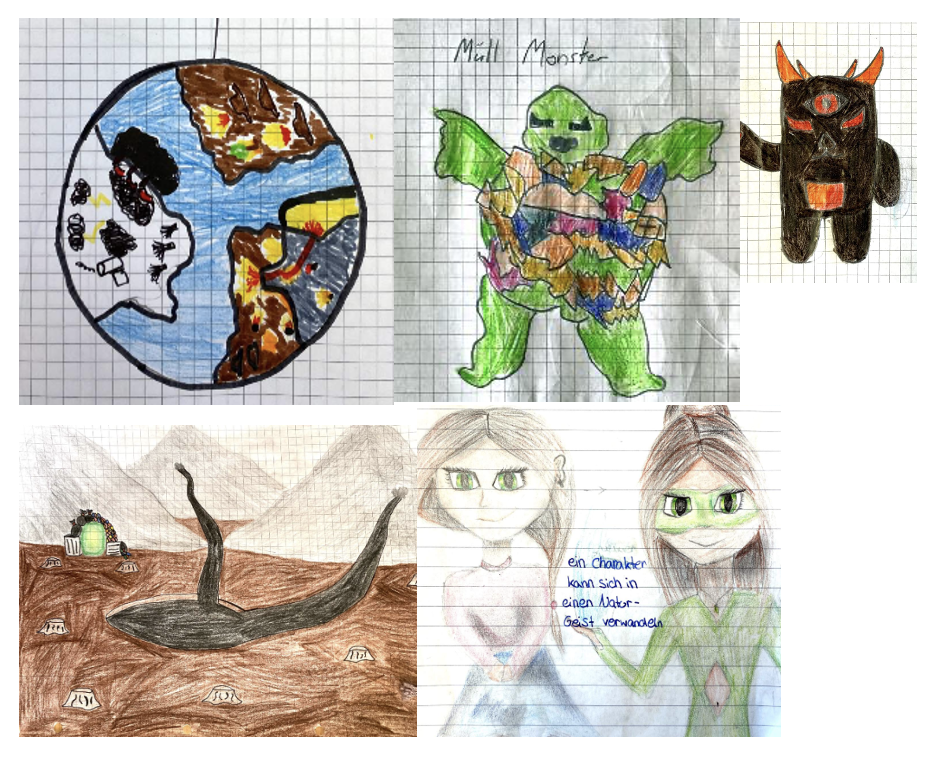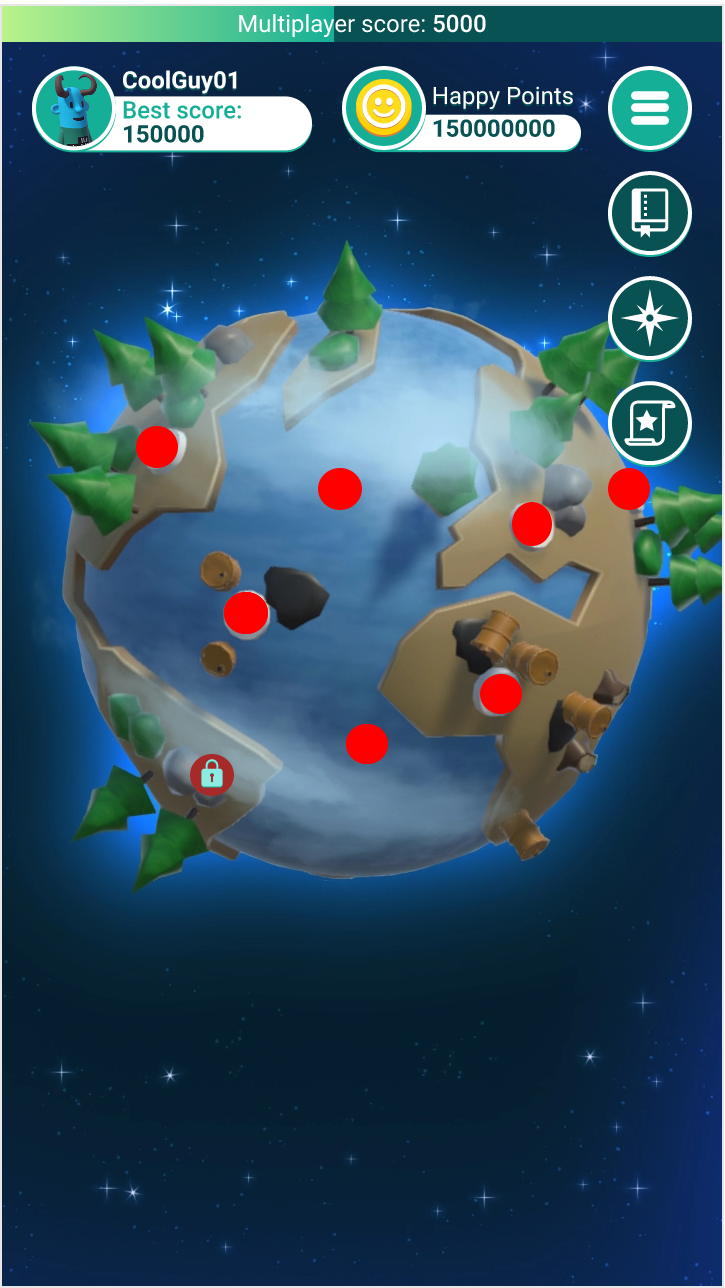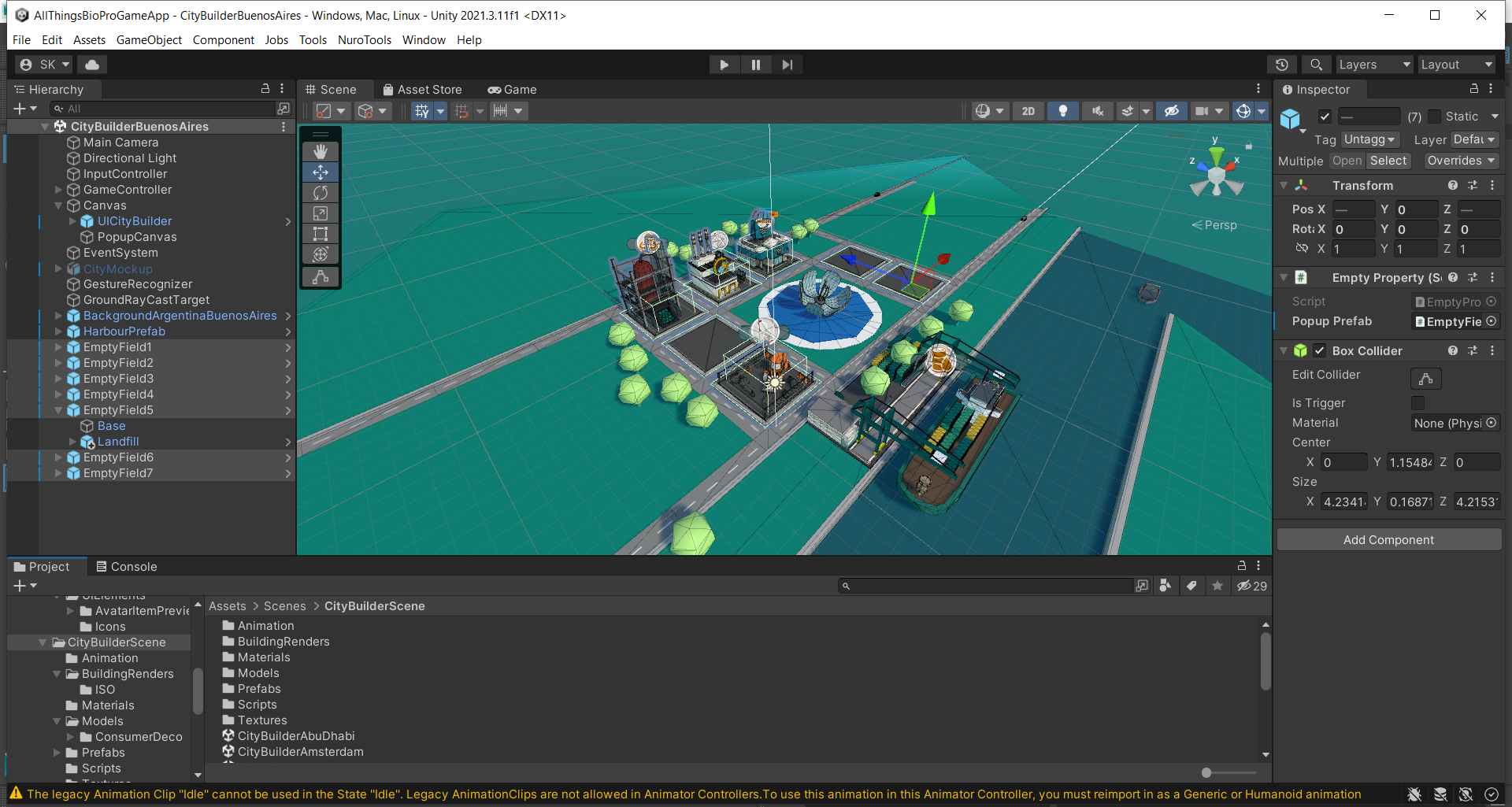Any game development starts from the initial idea and with the concept art. In the pre-production process, artists and game designers carry out the initial research that defines the genre and the style of the future game, they gather visual references and highlight the main features of the game. This step is particularly inspiring and creative, during which the teams reach out to potential users of the future game to come up with relevant visual art references after the introduction of a back-story.
In the European project AllThings.Bio the art process started with co-design workshops with citizens and secondary school children to gather ideas and start visualising the future game. The children were particularly creative and invented the basic avatar characters and backgrounds that Nurogames, the game developer of AllThings.Bio, took as a basis for future assets design and game development.

Figure 1 – Allthing.Bio workshop participants draft designs
Bringing ideas to life is usually split into 4 main steps:
- drawing, where the environment and the future characters are set;
- coloring, defining a common color palette so that characters and assets appear in the scene with similar shades;
- editing;
- and finally the animation.
During these steps, a more rigid and finalised concept art is created by a 2D designer, who then progresses to creating detailed illustrations of the assets. The procedure usually involves a team of artists, designers and game developers elaborating on the user interface and user experience to provide the most cohesive and easy interaction with the game.
As soon as the teams agree on the common design approach and all the features, it is time to export each asset as a single image into the user interface, generate texture, and add properties to the assets. More sketches and reworks to individual assets are iterated in Photoshop (see example below). After that, the final ideas can move to a 3D design.

Figure 2 – Mock-up of the world environment
Figure 3 – Mock-up of the avatar editor
Before converting these assets into a game engine, it is useful to look at different types of assets that the AllThingsBio.PRO game uses and how they were created. The game includes some 2D/UI (user interface) assets, for example in menus, icons, and text boxes as well as 3D assets that users can rotate and observe from different perspectives. For this, yet another workflow has been applied, which, aside from using Adobe Photoshop also takes advantage of such tools as:
- Autodesk Maya – a 3D computer graphics application to create assets and visual effects
- Unity – a cross-platform game engine to create three-dimensional and two-dimensional games and interactive simulations
Figure 4 – Avatar design itterations in Adobe Photoshop
For the game to understand how a 3D model should move, “rigging” is needed. This refers to the process of creating a 3D model structure or bones. Rigging is also important for the future animation of the objects, because the “bones” of the model allow for future object distortion, change of position, rotation, and scale. Recording these aspects along a given timeline provides animation.

Figure 5 – Rigging of a planet 3D model in Maya
Figure 6 – 3D modelling of a character for the avatar editor
To add texture to the 3D models, UV mapping is required. This represents certain coordinates that correlate with the vertexes of our 3D object. It helps to distribute textures across the objects determining where our 2D images belong on a complex 3D model.
Finally, when all the design work is finished, the object is transferred from Maya into our Unity project. All nodes with position, rotation, and scales of our objects, meshes, textures and, if readily available, the animation will be imported. From here on, we can place our objects in a scene, reorder them, apply proper lighting that matches the whole scene and program the interactions. The game is almost ready.

Figure 7 – Unity Environment – modelling the city-builder world
Looking at how a mix of ideas can take life through your hands is something magic – especially when those ideas are shared at some desks in different countries and by people of all ages. That’s what generally happens when the strength of imagination and the power of technology merge.
—
08/11/2022